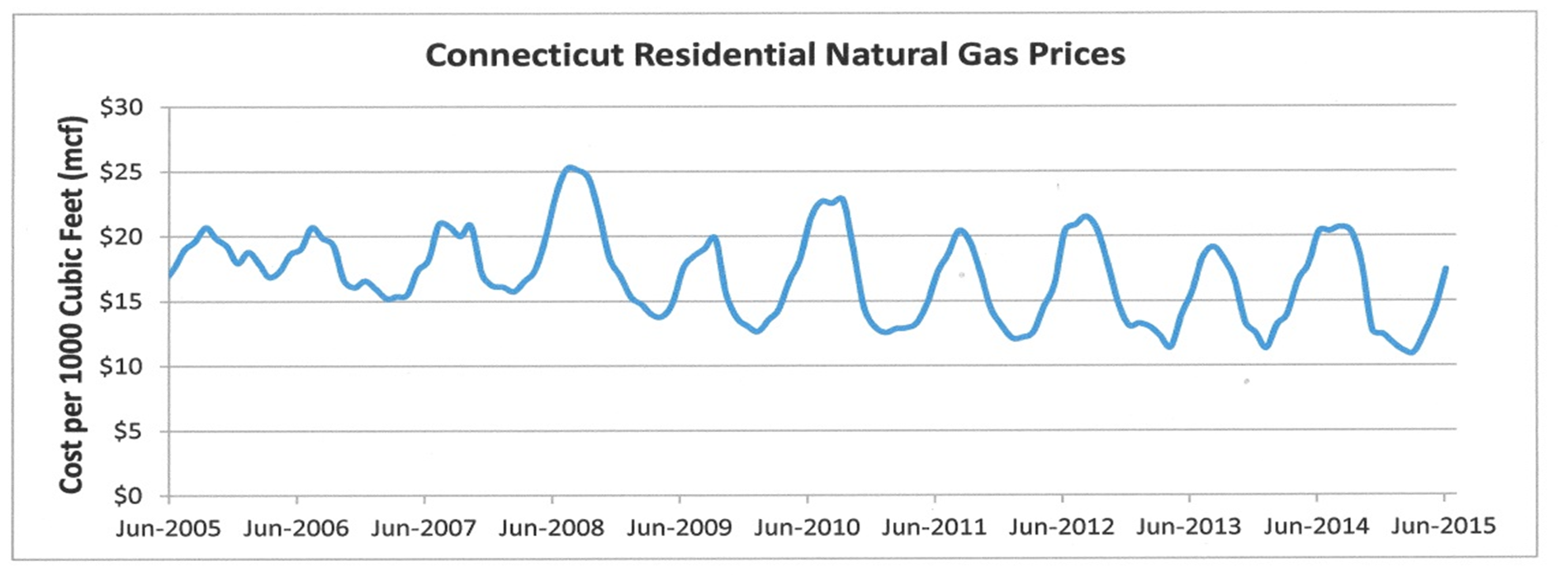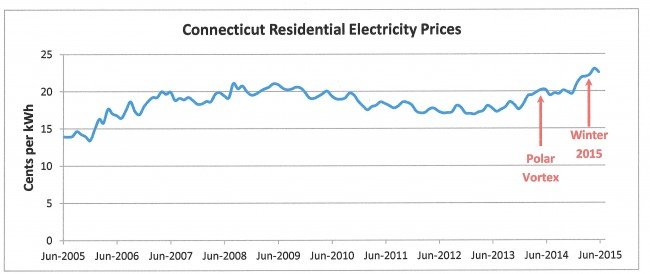Have questions or need help? Give us a call: 1-(888)-364-9259
Like most New Englanders, Connecticut energy consumers tend to use more energy per household than the national average. This is largely due to energy consumed during the heating season. Connecticut households typically use about 60% of their annual energy consumption on space heating, 24% on appliances and lighting, and 15% on water heating. Only 1% of residential energy consumption is attributed to air conditioning.
When it comes to heating their homes, Connecticut residents rely primarily on natural gas and fuel oil. Natural gas prices have experienced volatility in recent years as the market grapples with absorbing the increased production from shale deposits. Overall, however, natural gas prices have trended downward as supply has steadily increased.
 Source: U.S. Energy Information Administration
Source: U.S. Energy Information Administration
As shown on the graph above, residential natural gas prices have a strong seasonal pattern. There is also a decreasing price trend since 2008. This downward trend coincides with a change in wholesale market prices related to the development of shale gas reserves.
As for electricity rates, Connecticut consumers spend almost the same amount as the average U.S. household. Although Connecticut homes use far less electricity than the national average, higher electricity prices result in power bills on par with the rest of the country.

Source: U.S. Energy Information Administration
Residential electricity prices have varied within a narrow band over the past decade. A downward price trend coincided with an economic recession followed by price stability for a period of almost three years. There were price increases associated with severe winter weather in 2014 and 2015. However, even without these extreme weather events, there is an overall upward trend in residential electricity rates since early 2014. Electricity rates for Connecticut households are now near record levels.
With the uncertainty of the market, it is more important than ever for consumers to shop for competitive electricity rates. Rates can be locked in for periods up to three years which can protect the customer from further price increases. Customers can also choose short term fixed price electricity plans that provide more flexibility in the event the current market price trend reverses.